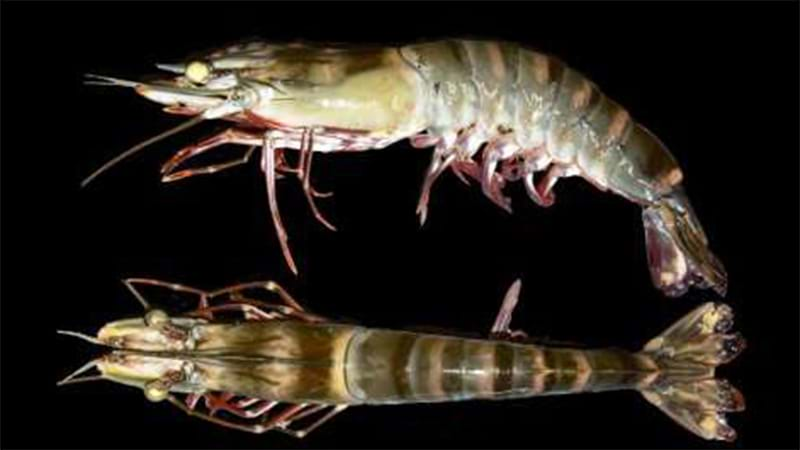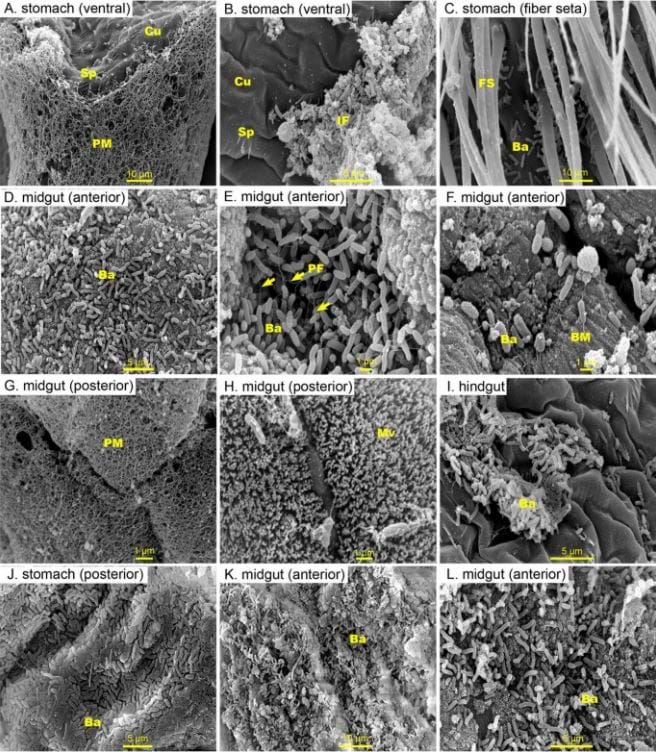
Illustration: Internet
In aquaculture, Vibrio harveyi (Vh) and V. parahaemolyticus (Vp) have long been regarded as dangerous pathogens of shrimp in fresh, brackish and saline environments.
In this study, the scientists used electron microscopy (SEM) to observe the gut of Penaeus monodon.
Shrimp were infected by 1 in 2 pathogens through the Artemia diet with bacteria binding. After 6 hours of infection, assess the effect of bacteria in shrimp intestinal tract.
Result
A significant increase in the amount of V.harveyi in the intestinal tract leads to the development of infections in the intestine and the middle intestine, but not in the posterior and anal glands. SEM also shows the creation of pili-like structures of peritrichous by V. parahaemolyticus attached to the shrimp intestinal lining, while only a small amount is found when V. harveyi invades the host's epithelium.

At 1 o'clock, there was no bacteria sticking to the stomach surface (A).
Many bacterial cells associated with food are found attached to the lining of the stomach (B).
Time 6h: Many rod-shaped bacteria have a single morphology that is fastened to the stomach surface (C), the intestinal surface before (D) the middle intestine (E).
Epithelial layers with settled bacteria exhibit destruction in both the stomach and upper intestine, while deeper areas have no intact bacteria (G - L) Arrows are bacterial cells.
Serious destruction of the intestinal epithelium after 24 hours has been observed with the loss of epithelial layer and the exposure of the underlying basement membrane (Fig. F, G, H, I).
Contrary to these observations, the intestinal surface of the shrimp has no such expression when tested with Vibrio spp. no pathogen or with Micrococcus luteus, no significant changes in the intestinal surface of the host. In black tiger shrimp, the intestinal tract is a particularly favorable position for development of bacteria, and these short rod-shaped bacteria include those belonging to the Vibrio spp group.
The typical infectious cycle of pathogens in P. monodon includes:
1) Intrusion of pathogens through the oral route;
2) bind chitin to the gastric mucosa, multiply and damage host tissue;
3) Exit the host body. Each step will involve adhesion, production of enzymes, toxins ... destroying intestines and shrimp liver.
Conclude
The data from this study by the scientists showed that the pathogens of P. monodon must be able to adhere to and damage on the surface of the digestive tract, especially the intestine and then use a series of toxins and enzymes to infect hosts and lead to disease.
Investigation of the interaction between bacteria and hosts occurring in the gastrointestinal tract may provide new strategies to prevent or control bacterial infections in farmed shrimp.
Source: AmBio Collect